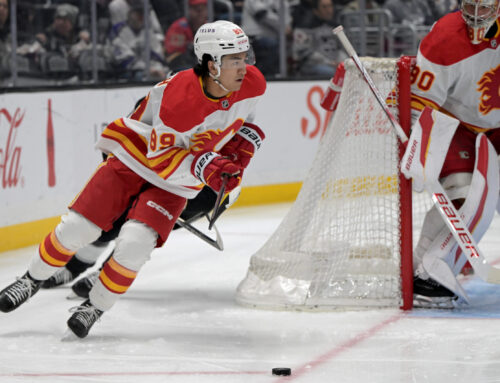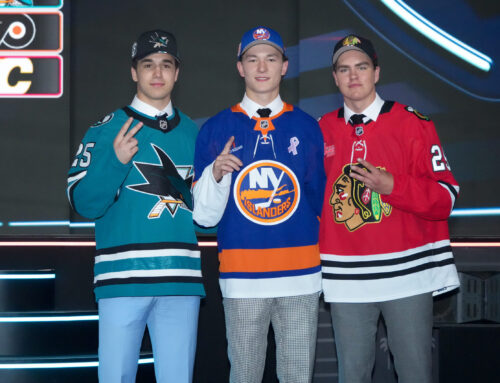
Trading an established player for prospects is always a gamble that rarely draws anything less than scorn or ridicule from fans and media.
Teams don't do it because they think they can get ahead by doing so, they do it because they're forced to and they're trying to cut their losses.
Such is the case with the Montreal trade of Jaroslav Halak to the St. Louis Blues for Lars Eller and Ian Schultz. Montreal did not need Halak and Carey Price and had to choose one because both will be RFAs this summer and both have the ability to be starting goalies. I was surprised they traded Halak – because I think he's better now – but I can understand Habs GM Pierre Gauthier's rationale for this trade because he traded the goalie with the most value and kept the one with the unrealized upside.
Halak was a good bet to be the target of an offer sheet, but rather than take picks as compensation, Montreal opted for a player who is ready for the NHL in Lars Eller. As a 20-year-old playing for the Peoria Rivermen of the AHL, the Danish forward scored 57 points in 70 games. If the first-rounder from 2007 lines up on the wing, he can make the Habs next season. As a centre, he'll be behind Tomas Plekanec and Scott Gomez, but also provides insurance in case Montreal can't re-sign Plekanec, who is a UFA this summer.
Considering how saturated the goalie market is, I think the Habs were fortunate to get a player of Eller's caliber. Is it fair value? No, but that's because Eller has only played two NHL games and Schultz has yet to turn pro. Also, you have to wait until Eller and Schultz develop and contribute in the NHL before you make a fair assessment of this trade.
There are many UFA goalies available this summer and there are young prospects such as Cory Schneider, Jacob Markstrom, Jonathan Bernier who are ready to seize NHL jobs. In recent years, we've also seen a trend of European goalie prospects blossoming and becoming a coveted free agent. Last year, it was Jonas Gustavsson and this year Jussi Rynnas.
Montreal had goalie depth – more than they needed – and the worst thing you can do with goalie depth is let it wither on the vine and squander it. Buffalo did that with Mika Noronen and only got a second-rounder who turned into Jhonas Enroth.
The difference between Noronen and Halak is that the Slovak netminder established himself as a NHL player and, until faltering against Philadelphia along with the rest of his team, was having a great playoff. In helping his team knock off top seeds Washington and Pittsburgh, Halak deserves some credit, but Montreal's team effort – including a phenomenal ability to block shots — also played a large part in those upsets.
However, you can't tell that to the fans and headline writers in Montreal who put Halak on a pedestal in the playoffs and hailed him as a hero. There's no doubt Montreal could regret this trade if Eller doesn't pan out and if Carey Price doesn't get his head on straight, but there's a chance the second-guessing will quickly fade away.
So, who are the prospects who face the difficult task of not only playing in Montreal, but replacing a popular goalie?
Eller is a left-winger/centre is a great skater with excellent puck skills who tends to be a more of a playmaker than a goal scorer. His vision and quick decision-making skills help him work well in open ice and traffic and his playing style compares to Michael Nylander. Although he's from Denmark, he played hockey as a teenager in Sweden played in the Swedish Elite League for two seasons before jumping to the AHL this past season. In the Dobber Prospects Guide, Eller was touted as a Calder Candidate for next year and his upside was listed as 30-45-75+ with 80 PIM potential. His certainty of reaching the NHL is 90 per cent while his chance of hitting his upside is 50 per cent.
Schultz was considered by some one of the toughest players available in 2008 draft class. Don't overrate his abilities as a fighter though. He's solid, but had his hands full in a bout with draft prospect Dylan McIlrath this year. Yes, McIlrath is considered the best fighter in the WHL, and certainly the best in the draft 2010 class, but Schultz is two years older. When Schultz was 17, he wasn't taking on the top fighters among 19-year-old veterans and doing as well as McIlrath did in their fight; temper your expectations accordingly. Although not a heavyweight, he dropped the gloves 18 times this year. In 196 WHL games, Schultz racked up 405 penalty minutes.
Still, Schultz was the captain of the WHL champion Calgary Hitmen and will be reunited in Montreal or Hamilton with former teammate Ryan White. As a 19-year-old, Schultz had 55 points in 70 games with Calgary. Among his 24 goals were 10 on the power play, which show a willingness to pay the price in the dirty areas.
Schultz is not a great skater and will likely be a third-line or fourth-line right winger. He won't provide a lot of offence but will do a lot of the heavy lifting that helps teams win. He won't be a star, but he will be respected by teammates and foes and his rugged style will make him popular with fans.
Schultz's upside: 15-15-30, 150 PIMs (Certainty: 75 per cent, Upside: 60 per cent)




 FLA
FLA CHI
CHI NYR
NYR PIT
PIT L.A
L.A COL
COL UTA
UTA BOS
BOS BUF
BUF SEA
SEA NYI
NYI VAN
VAN TOR
TOR CBJ
CBJ DET
DET STL
STL
